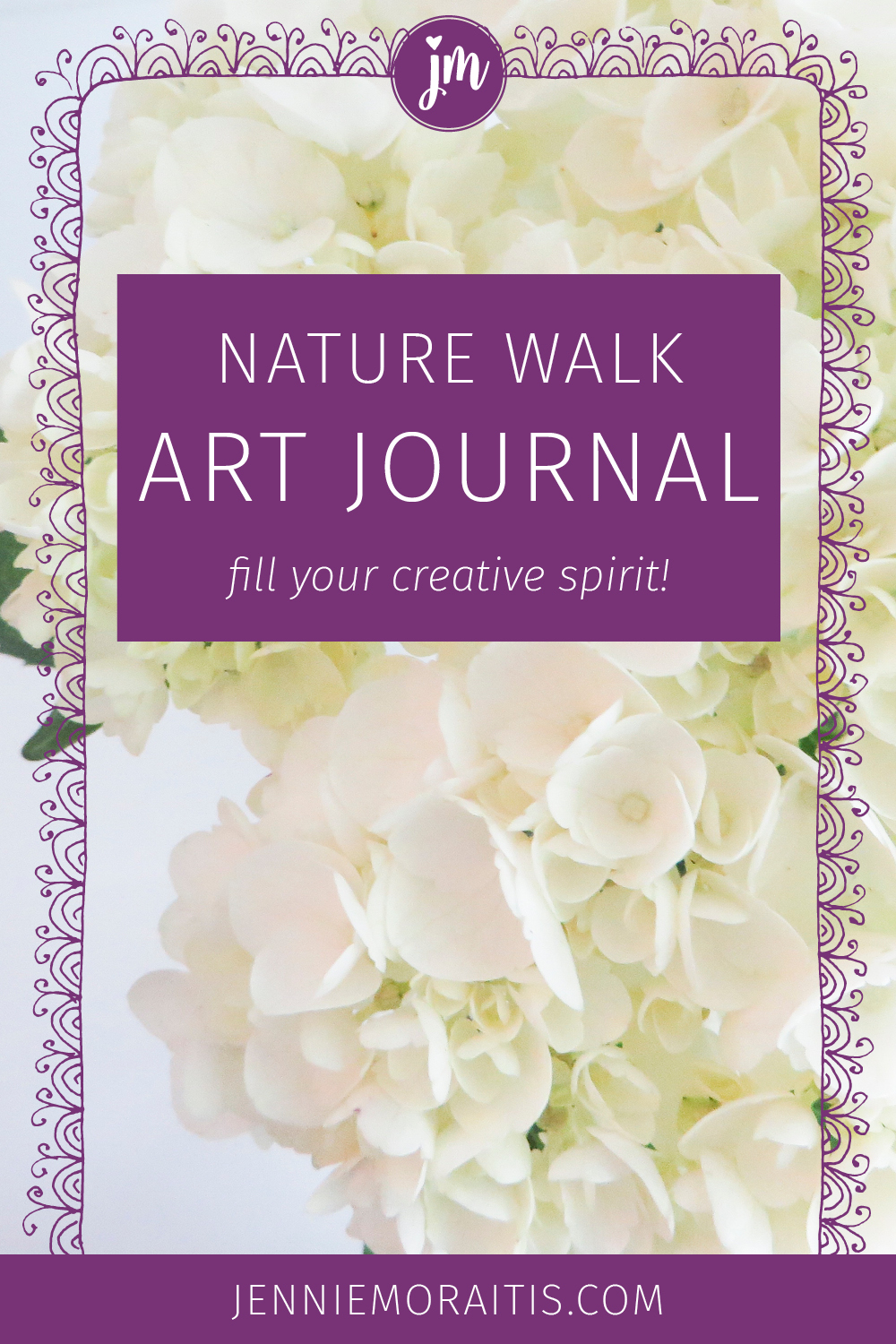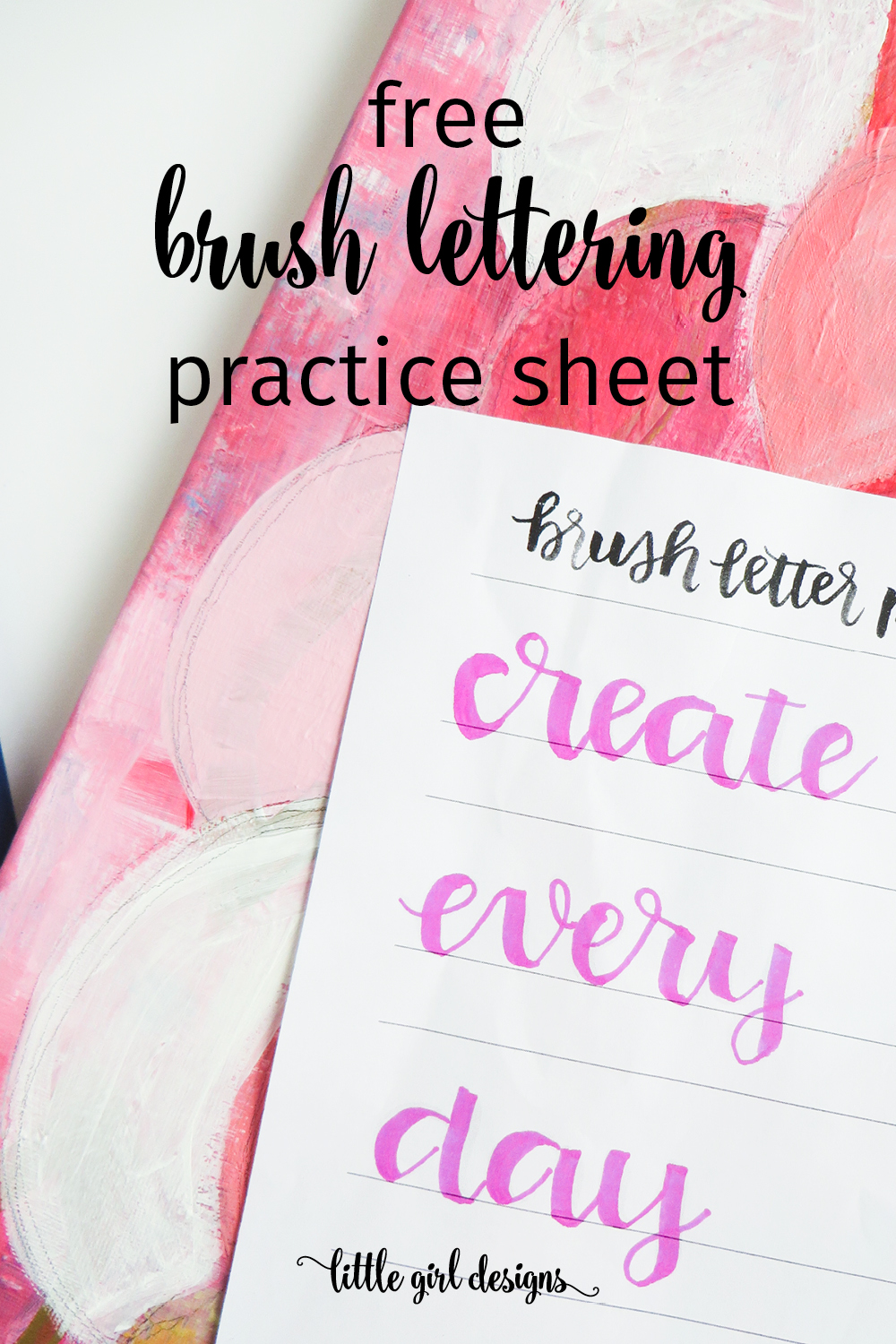There is nothing like a nature walk to fill my creative spirit with inspiration. I’m sure it’s the same for you. Whether you live near a forest like I do or in a suburban neighborhood, you can find delightful surprises that can act as prompts and inspiration for your art journal.
For the next couple of weeks, we are going to intentionally make time to go on a nature walk (or two or three . . .) and gather ideas for our journals. I’ll be sharing my finds on Instagram, but before we get started, I want to share with you some ideas for your own mini-journeys.
To begin, you don’t need to be a botanist or John James Audubon to learn how to identify plants or sketch the pretty birds you see outside. As you go outside, you are going to be using all of your senses to pull in ideas to be used later.
Some ideas:
- Bring a camera to quickly capture a flower or plant that you see (and want to sketch, paint, or think about later.)
- Check out a local wildflower identification book from your library. This will prove especially valuable in the summer. (Here’s the guide we love and use daily.)
- As you walk, take note of the colors you are seeing. How many greens make up the trees in the forest? How many shades of gold do you see in the dried flowers and grasses of late summer? How many colors of blue (or grey or green) do you see in the ocean?
- Allow yourself to enjoy the moment as much as possible. Walk slowly. Take time to look and notice. Bring a small child with you; they will help to slow you down and act as your guide.
- If there are bits of moss or leaves on your path, feel free to bring them home with you to sketch or enjoy later. A leaf can be transferred with a stubby crayon into your journal as a leaf rubbing. Frankly, anything can be made into a rubbing to add texture and interest to your journal.
Remember, you are gathering inspiration and ideas.
Starting your blank journal page
A nice way to begin a blank journal page is to write about your walk. Free-write in loose, loopy letters. You’ll mostly cover these words later, but they are a good way to cover the page and start the creative process. Be sure to use a permanent pen so the ink doesn’t smear when you cover it with gesso or paint later on. (I’ll show you how I did this in my next post.)
Write about what you saw, heard, and enjoyed most about your walk.
Is there a poem or song that came to mind that felt fitting to the moment? Write out the lyrics. We have several books of poetry that work well for nature poems as well. I’ll reference some ideas at the end of this post to get you started.
After you fill the page with writing, you can cover most (or all) of it with gesso or acrylic paint. Let the paint completely dry before moving on to collage, drawing a figure, gluing in magazine pictures, or any mixed media experiment you’d like to try. I especially like Jane Davenport’s YouTube videos for ideas of what to create in my journals, but you can honestly draw, scribble, write, tape, paste, or paint anything you desire.
An art journal is a place for you to explore art supplies, express your creative side, and play. If you don’t like how a certain page turns out, just turn the page!
(Here are some more tips on starting your blank journal page.)
Nature Journal vs. Inspired Art Journal
I love the idea of keeping a nature journal where you record specifically what you saw on a particular day. This is something we do together as a family in my home. However, for this art journal challenge, I would like you to think past a “technical” this-is-what-I-saw approach.
For my art journal page that I’ll share in a week or so, I chose to draw a girl who has a forest-inspired outfit on. I’ll share the steps of how I created her in that post, but for now, think of how you can take elements from your walk and incorporate them.
Inspirational books for Your Nature Walk:
Flower Fairies of the Summer by Cicely Mary Barker. We discovered a used version of this book when our daughter was very small, and it has been a delightful companion for several years. When you look closely, you’ll note the clothing that the children wear in the illustrations are similar to the flower themselves. The flower illustrations are very realistic, and we’ve spotted many of these flowers on our wanderings because of this children’s book!
For your own nature art journal, you could be just as imaginative. Look at the leaves of a tree—what else could they be? Sketch your ideas in your book. Study a stem of Queen Anne’s Lace and note the thousands of tiny white flowers. Wouldn’t they look pretty decorating a border on your page?
Firefly July is a book of very short poems for children, but I was so taken by the vivid descriptions in this book, I fell in love with it at first read. There’s bound to be a poem in here that you could copy into your art journal. I would tell you my favorite, but there are too many!
A Child’s Garden of Verses by Robert Louis Stevenson. You might already have a copy of this classic, so dig around to see if you do. Not all of the poems will fit, but you might find a line or two that you like.
Really, any book of poems will do. You’ll find many follow the seasons, so it is very easy to find a poem about nature that perfectly fits your day.
As I mentioned above, in my next post I’ll share a photo gallery of my own art journal as I gathered inspiration from my own forest meanderings.
See you soon, and enjoy your nature walk!





